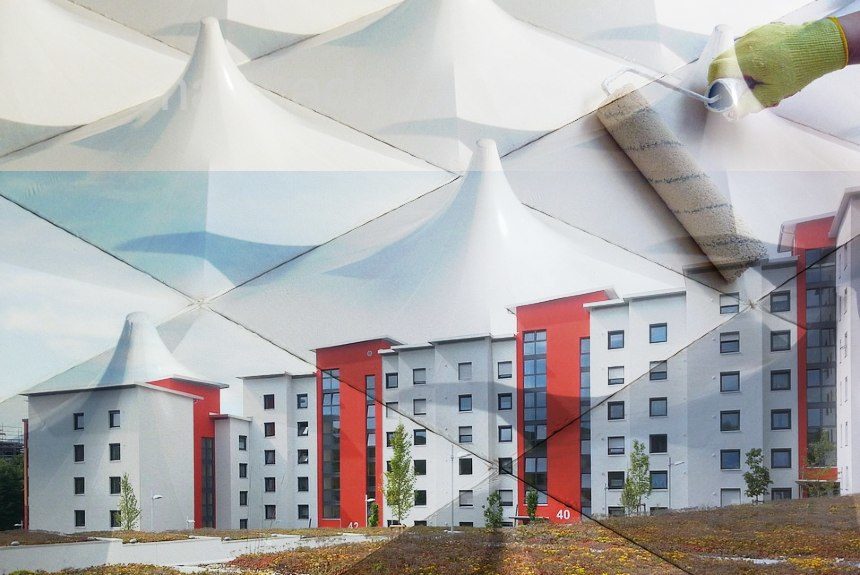Climate change is raising temperatures and extending hot and dry days. Communities must protect themselves from scorching temperatures and counteract the urban heat island effect (UHI).
Extreme heat can be fatal. It also causes health problems from exhaustion to dehydration. Heat-related deaths are also rising and have claimed more lives than hurricanes, tornadoes, or floods, a group of scientists from Delaware University accounts.
Aside from a formulated white paint that researchers from Purdue University have developed, trees are a compelling piece of geoengineering that could drastically lower temperatures. A study investigating tree cover disparities in the Northeastern U.S. finds that low-income areas with 30% less tree cover have higher temperatures of up to 7 degrees Fahrenheit.
The Wall Street Journal (WSJ) article, “To Offset Climate Change, Scientists Tout City Trees and Ultra-White Paint”, reports that researchers at Purdue University are perfecting the whitest paint to reflect the sun’s rays.
According to research published in the Applied Materials & Interfaces journal, the paint can provide a cooling effect similar to central air conditioning and reflects 98.1% of sunlight, significantly higher than regular white paints.
Because this paint reflects almost zero heat, it can save households up to 70% of their air conditioning costs.
The WSJ article mentions further, “The ultra-white paint, based on a solution of barium sulfate particles, is being developed for commercial use. Dr. Ruan says that with production costs similar to those of conventional paints, the paint could become a simple way for building owners and homeowners to help climate-proof buildings.”
Innovations like this formulated white paint can be effective solutions alongside vegetation that could address extreme heat from the urban heat island (UHI) effects and increased temperatures due to climate change.
To read the study, click the link below:
Sources:
Xiangyu Li, Joseph Peoples, Peiyan Yao, and Xiulin Ruan ACS Applied Materials & Interfaces 2021 13 (18), 21733-21739 DOI: 10.1021/acsami.1c02368
Hotz, R. (2021, June 4). To Offset Climate Change, Scientist Tout City Trees and Ultra-White Paint. The Wall Street Journal. Retrieved from https://www.wsj.com/articles/to-offset-climate-change-scientists-tout-city-trees-and-ultra-white-paint-11622822424



Leave a Reply